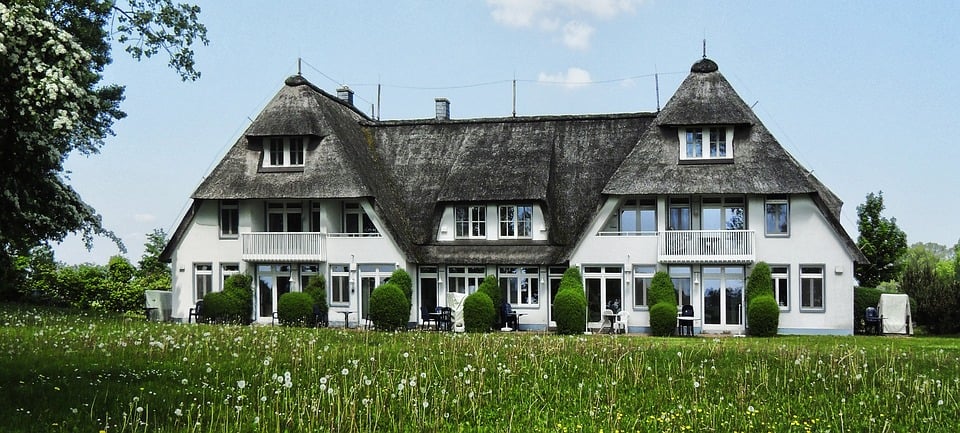Buying a home is one of the most significant financial decisions you’ll ever make, but the process...
9 Easy Ways to Get A Green Home This Spring
By Megan Wild, Author of Your Wild Home
Whether you’re building a house or simply want to revamp your home to make it more energy-efficient, spring is a great time to go green. A green home is one that uses as few nonrenewable energy sources as possible, opting for both sustainable energy usage and renewable energy sources. In other words, think less about oil, gas, and coal and more about solar and wind power. It’s also one that is sustainable and doesn’t contribute to the depletion of natural resources.
Homeowners who make their homes green are rewarded in several ways. First, energy costs will go down. Second, their choices will contribute to the long-term health of the planet, as greenhouse gases that contribute to global warming will be minimized. Third, green homes often have a higher resale value than more conventional houses. Younger generations are very interested in being environmentally conscious and will pay a premium for a green home.
Going green doesn’t have to be complicated or time-consuming, though. Here are nine easy ways to go green in your home.
1) Perform an Energy Audit
There’s no substitute for data, right? As you begin your home’s green journey, ask the local utility to come out and do an energy audit of your home.
They will look for areas that might be contributing to high energy consumption, such as drafty windows and patio doors. If your home isn’t insulated, they may recommend insulation, which can help keep warm air in during winter and cold air out. They will also look at air ducts and vents to make sure they are working at peak efficiency.
Implement all the suggestions made in the energy audit to put your house on the green road.
2) Install Programmable Thermostats
Once you’ve maximized your home’s energy use, try to cut it even more by installing programmable thermostats. With these, your home can be programmed not to use energy when no one is around and to turn up the heat in winter and the air conditioning in summer when you’re heading home. You can also program them to use minimal heating or cooling during the night.
3) Use Energy-Saving Light Bulbs
LED and compact fluorescent lamp (CFL) bulbs save a ton of energy over incandescent bulbs. In fact, just one CFL bulb replacing one incandescent bulb saves more than 400 pounds of greenhouse gases. The lesson is clear: Use energy-saving light bulbs in all your lamps.
4) Utilize a Timer or Motion-Sensitive Lights
It’s very easy to leave lights burning when you don’t mean to. You might be in a rush to get to work on time and leave lamps on. You may go downstairs intending to come back to your bedroom and be drawn into a TV show in the living room. Before you know it, your bedroom lights have been burning for five hours.
Eliminate scenarios like this by installing motion-sensitive lights or by utilizing a timer that will turn lamps off. The latter doesn’t come on unless someone is in the room.
5) Recycle Regularly
Recycling is one of the key moves toward sustainability. All your bottles and newspapers should be recycled regularly. Materials like batteries, smartphones, and computers require special recycling, but it’s increasingly easy to do.
Grocery stores and other retailers often recycle batteries. Call your municipal offices to learn when and where electronics can be recycled. If you have a garden, recycle your kitchen scraps into compost to ensure a healthy spring start to your greenery.
6) Use Sustainable Materials
If you’re building a new house or renovating one, think “sustainable” when you think “materials.” If you’re looking for flooring, for example, think recycled wood or bamboo. Recycled wood is repurposed wood, meaning no new trees are harvested. Bamboo grows very rapidly and thus will replenish itself easily.
7) Get an EnergyStar Certification
The EnergyStar label began as a certification by the U.S. Environmental Protection Agency (EPA) to show which appliances and building elements (like windows) save energy. It’s now possible to have a contractor certify your entire home with EnergyStar. A rating of 75 or better is considered “EnergyStar Certified.”
8) Use Landscaping Effectively
Don’t forget that landscaping is your friend in conserving energy. If you’re building a home, think about installing large windows in any southern exposure to maximize light and heat from the sun. To cool and shade in the summer, plant leaf-bearing trees close to the house. Shrubs and plants will contribute to cooling during the summer as well.
9) Install Solar Panels and Appliances
If you’re building a new home, think about installing solar panels on the roof. A solar roof utilizes energy from the sun to replace the energy from your utility company. Solar panels can also heat your water via a solar water heater. Solar is both renewable and increasingly cost-competitive with other energy sources.
Many methods of going green are simple and easy — including these nine methods. If you're in the market for a new home, you can browse real estate for sale near you here. Enjoy your spring!


